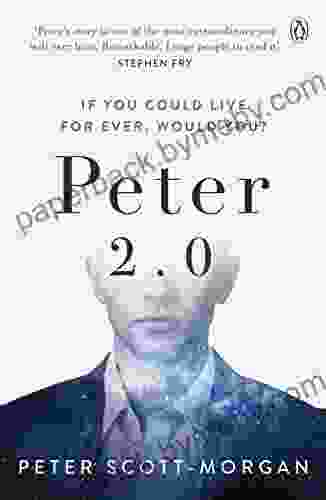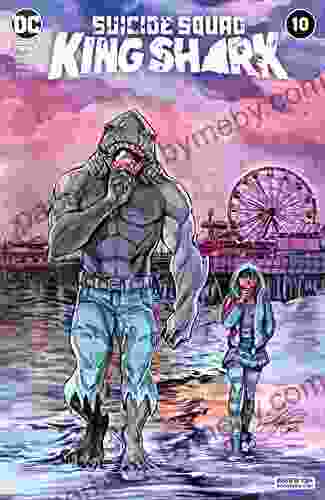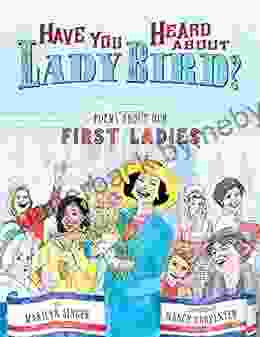In an era marked by rapid technological advancements, the boundaries between humans and machines are blurring. Peter Scott-Morgan, a British Paralympic athlete, stands as a testament to this transformative convergence. As the first human cyborg, Peter's body has become an intricate fusion of prosthetics and advanced technology, enabling him to redefine the limits of human potential.
Embracing Adversity: From Paralysis to Possibility
Peter's journey began in 1983 when a motorcycle accident left him paralyzed from the waist down. Undeterred by his physical challenges, he embarked on a remarkable rehabilitation that eventually led him to the world of competitive cycling. Despite the limitations imposed by his disability, Peter's unwavering determination propelled him to achieve extraordinary feats.
4.8 out of 5
| Language | : | English |
| File size | : | 1658 KB |
| Text-to-Speech | : | Enabled |
| Screen Reader | : | Supported |
| Enhanced typesetting | : | Enabled |
| X-Ray | : | Enabled |
| Word Wise | : | Enabled |
| Print length | : | 312 pages |
In 2004, he reached the pinnacle of his cycling career by winning a gold medal in the Paralympic Games. However, tragedy struck again when Peter suffered a serious cycling accident that resulted in the amputation of his lower legs. Faced with this devastating setback, Peter refused to succumb to despair. Instead, he embraced the opportunity to explore new possibilities and forge a groundbreaking path.
The Birth of a Human Cyborg: A Technological Marvel
Through a partnership with the University of Reading, Peter became the recipient of cutting-edge prosthetics designed to enhance his mobility and athletic performance. Implanted into his body were muscle-controlled bionic legs and a brain-controlled prosthetic hand. This remarkable technology allowed Peter to regain a semblance of his former mobility and control.
The fusion of human flesh and advanced engineering transformed Peter into a human cyborg—a living embodiment of the future of human-machine interaction. With his bionic limbs, he could now walk, run, and cycle with a level of freedom and independence that was previously unimaginable.
Pushing the Boundaries of Human Potential
Determined to maximize the potential of his bionic enhancements, Peter returned to competitive cycling. With his upgraded body, he achieved a series of remarkable feats, including a world record for the fastest cycling speed on a handbike. His success shattered societal perceptions of disability and inspired countless individuals with physical challenges.
Beyond cycling, Peter ventured into other endeavors, utilizing his technological enhancements to become a motivational speaker and advocate for the rights of the disabled. His message of resilience, determination, and the transformative power of technology resonated with audiences worldwide.
A Symbol of Progress: Challenging Societal Norms
Peter's story is not merely a personal triumph but also a profound reflection on the evolving relationship between humans and technology. By defying the traditional boundaries of both physical ability and human identity, Peter challenges long-held societal norms and expands the possibilities of human existence.
His presence as a human cyborg sparks important conversations about the ethical implications of human enhancement and the blurring lines between what is natural and what is artificial. Peter's journey invites us to embrace diversity, defy limitations, and envision a future where the fusion of technology and the human spirit can unlock unprecedented possibilities.
Peter's Legacy: Inspiring Future Generations
Peter's extraordinary journey has left an indelible mark on the world. His resilience in the face of adversity, his unwavering determination to push the boundaries, and his compassionate advocacy have inspired countless individuals to overcome challenges and believe in their own potential.
As a symbol of progress and a pioneer of human-machine integration, Peter's legacy is destined to continue inspiring future generations. His story serves as a reminder that even in the face of seemingly insurmountable obstacles, the human spirit has the indomitable power to triumph.
Peter Scott-Morgan, the human cyborg, stands as a beacon of hope and a testament to the transformative power of science and the human spirit. His journey from paralysis to possibility, from adversity to triumph, is a story that continues to captivate and inspire. As we navigate the rapidly evolving world of technology and human enhancement, Peter's legacy reminds us of the boundless possibilities that lie ahead and the importance of embracing diversity, challenging norms, and striving for a future where human potential knows no limits.


























































































